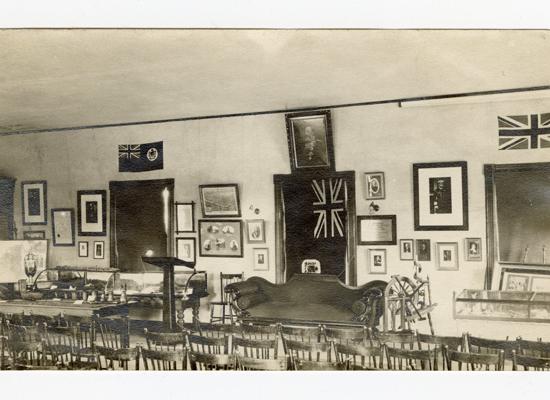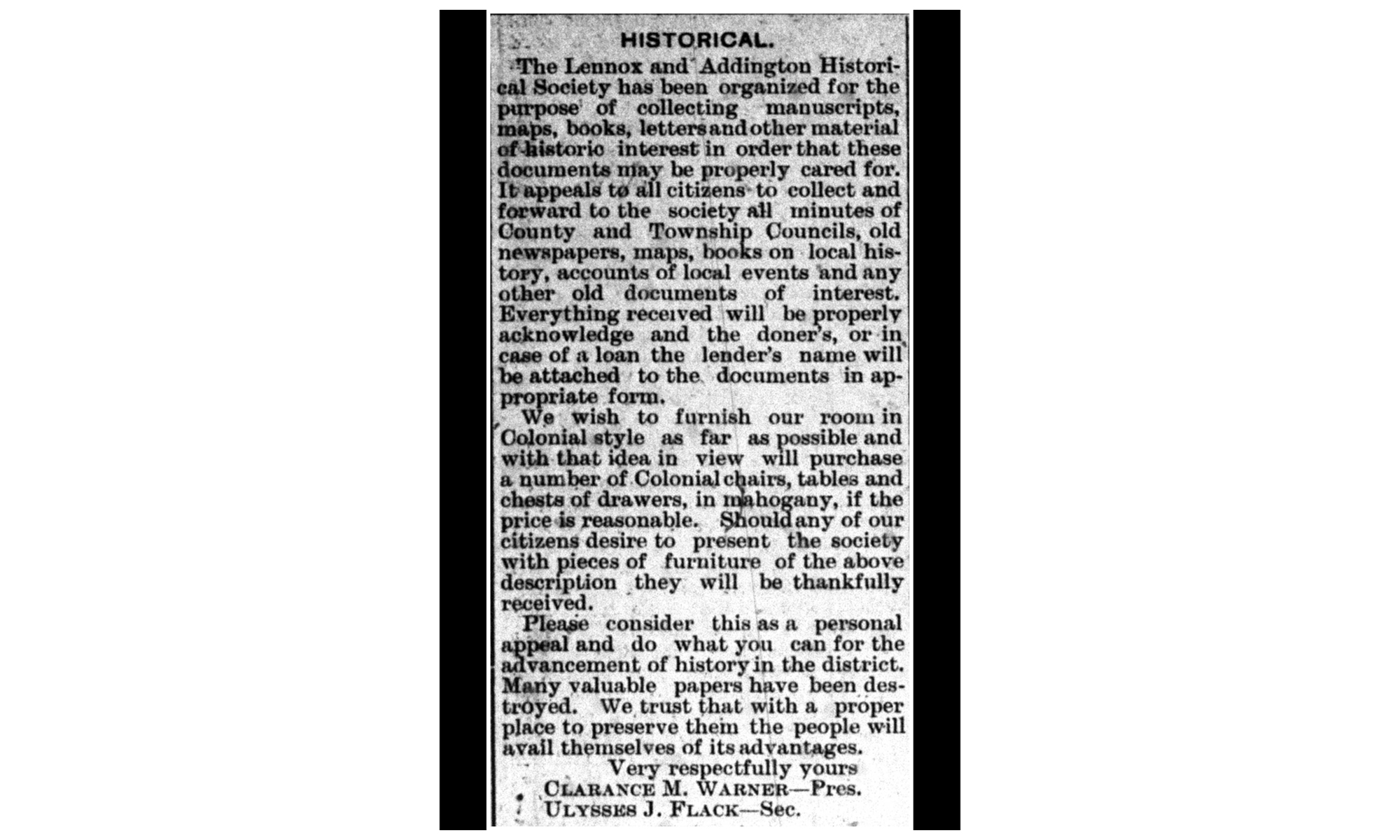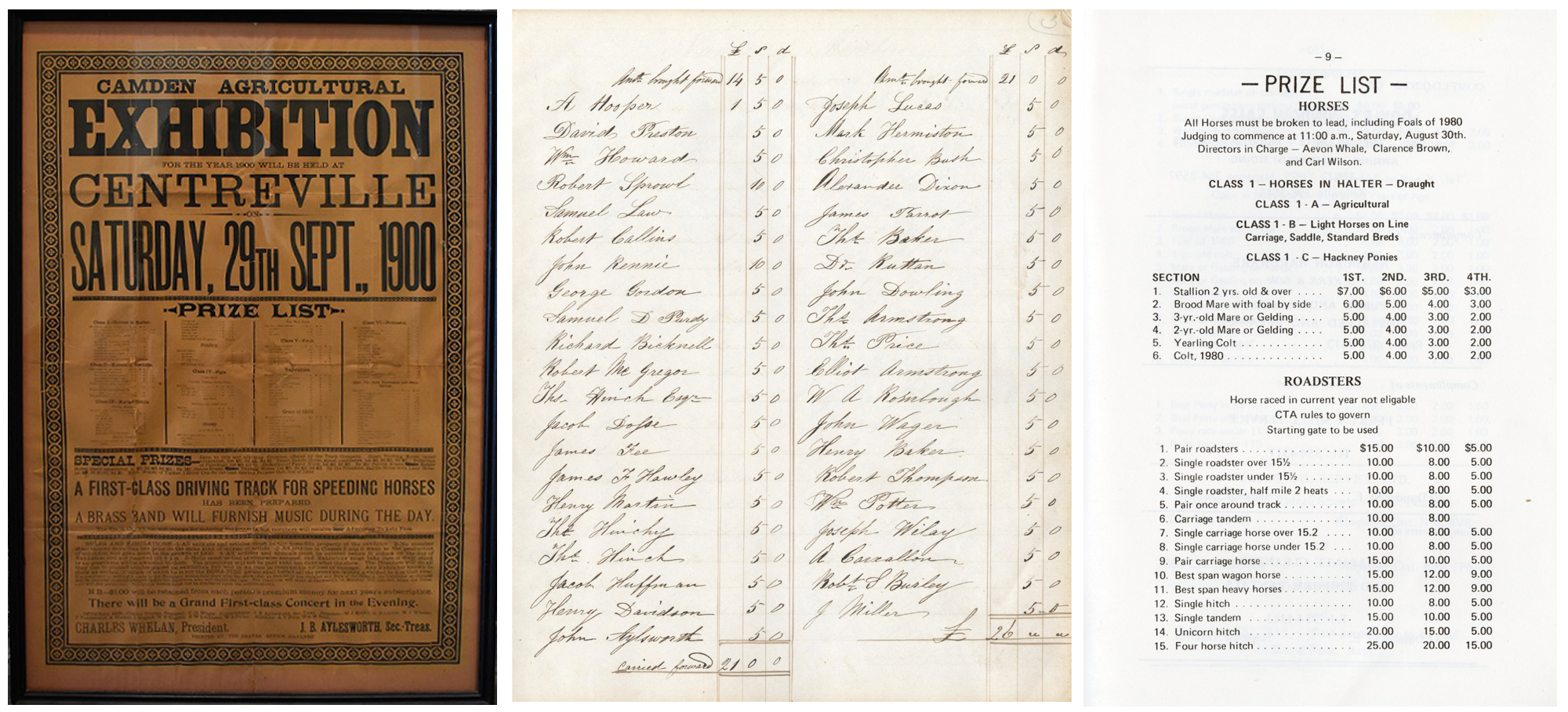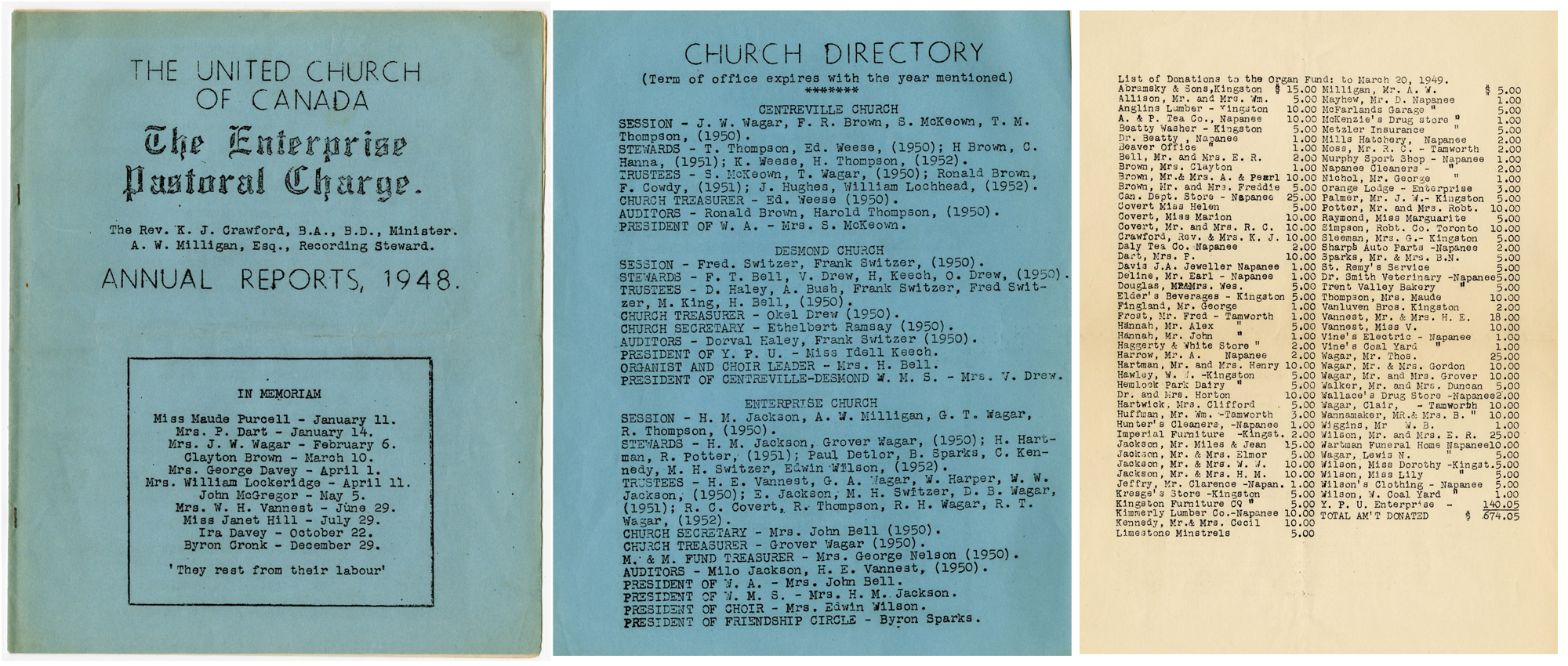
Broadsides, bibles and annual reports, oh my!
Setting goals to ensure longevity of archival records and their stories
On CBC radio last week they interviewed a guest, a specialist in career shifts and big life changes. Normally, I have one ear on the radio, the other on the circus that is my house, but the change guru got my full attention when describing the usefulness of setting goals over stating New Year’s resolutions. As soon as you set an end point plus an evaluation measure, it’s a goal not an aimlessly thrown out resolution floating in the ether.
We tend to float resolutions but I have a goal in mind for the archives this year, and it involves the entire community. It’s a goal with a major challenge to be sure; measuring its success will, to some extent, be based on arbitrariness.
So can it be a goal with no clear end measure? I think so in this case. The goal is this: take every opportunity possible to involve the community in the continued growth of the archival collection. This seems obvious since the community is already involved in our growth – to the tune of about 90% of the annual acquisitions come from the community – but I want to make sure to reach as many community members as possible. In fact, the Lennox and Addington Historical Society started this off when it first organized way back in 1907:

They were successful in their bid for furnishing their space as seen in the top image. And certainly successful in their bid for textual records as evidenced in the Lennox and Addington Historical Society Early Collection now at the archives.
I’m taking the risk of sounding like a toddler who just had a snack worthy of a pro wrestler but is somehow still hungry. We receive generous donations from the community already, the problem, I fear, is that the records we seek, the records that tell a part of the Lennox and Addington County story, are not clearly identified. Who wants an old photograph of the family from Croydon or a letter written by Aunt Florence about the apple orchard they harvest each fall? We do!
My colleague JoAnne very succinctly described her goal of “de-growing” the Museum collection but we’re looking in the opposite direction (a photograph takes up way less storage space than a piano!). I won’t repeat what JoAnne notes about the gaps in the Museum collection - you can read her blog yourself here - but I will say the Archives has similar gaps in the records we hold.
In 2019, the community left us with very interesting items that I would like to highlight here. This is not a highlight reel of the most important records we received because they are ALL IMPORTANT. I’ve chosen to highlight three unique in format and stories they tell.
Centreville Broadside
2019.064
Saturday, September 29, 1900, the Camden Agricultural Exhibition was held at Centreville. All early agricultural societies with their fairs and exhibitions had the aim of improvement of farming methods, and prizes were given out to the best in many categories: horses, cattle, poultry, pigs, sheep, fruit, vegetables, grain, and farm implements and manufactures. From 1853 until 1893, the Centreville Fair was held on the road side in the village with use of the town hall. John B. Alysworth was secretary-treasurer for the first fifty years, then Joe Tate until 1920.1
This broadside is a fantastic example of a record produced by area agricultural societies and complements other agricultural collections at the archives. For example, a minute book of the Addington County Agricultural Society, 1853-1873 that also contains membership lists from 1853-1867, and prize lists from 1853 to 1864. We also hold a minute book of the Lennox Agricultural Society, 1853 - 1856.

Left: Centreville Broadside
Middle: Addington Agricultural Society, partial list of members for 1853
Right: Prize List, Horses, from Centreville Fair, 1980
Hannah McDowall bible
2019.066
Reverend Robert McDowall (1768-1841) clergyman of the Reformed Protestant Dutch and Presbyterian churches, came to the Bay of Quinte area in 1790 and organized congregations in Ernesttown, Adolphustown, and Fredericksburgh townships, settling in the latter (Sandhurst) by 1800. For more than 40 years, McDowall preached, performed marriages and spread the doctrine of Presbyterianism across central Upper Canada. In December, 1800, McDowall married Hannah Washburn, daughter of Ebenezer Washburn a United Empire Loyalist from New York, and they had one daughter and three sons.
Robert McDowall died in 1841, and is buried in the McDowall Memorial Cemetery, Sandhurst. Upon his death, the “Widow and Family” of McDowall were presented a bible from the Synod of Canada in January, 1842. Amazingly, members of Hannah’s family kept the bible for generations, and subsequently donated it to us this past summer. For a more extensive biography of Reverend McDowall, see http://www.biographi.ca/en/bio/mcdowall_robert_7E.html.

Left: Dedication in Hannah McDowall’s Bible presented to her in 1842 after her husband’s death
Middle: Marriage certificate signed by Reverend Robert McDowall, 1817
Right: McDowall Memorial Church, South Fredericksburgh, LAHS Collection, L&A Museum and Archives. Robert and Hannah McDowall are both buried in the cemetery visible to the left of the church.
United Church of Canada, the Enterprise Pastoral Charge Annual Reports, 1948-1954
2019.055
Still in use today, the United Church of Canada, Enterprise, has been in operation since 1892. Throughout its history, the Enterprise Pastoral Charge has included churches in Centreville, Desmond, Fifth Lake, and Enterprise-Roblin which includes Marlbank, Lime Lake, Ebenezer, and Tamworth.
The annual reports donated to the archives are a treasure trove of local families, thus a fantastic resource for genealogical studies, and church and clergy history. Included on the cover of each report is an in memoriam list for that year, again, a very useful source for genealogical research.

Cover and pages from the 1948 Enterprise Pastoral Charge Annual Report
These are only three of the donations received in 2019 but three that demonstrate the various types of records we hold and that are always welcome. And like the Lennox and Addington Historical Society said in 1907, we collect “materials of historical interest in order that these documents may be properly cared for.” Next time you’re cleaning house, keep us in mind for records you have no use for anymore – if those records help tell the story of Lennox and Addington County and its people, we probably want them.
1. The Ontario Association of Agricultural Societies (OAAS). The Story of Ontario Agricultural Fairs and Exhibitions, 1792-1967. OAAS, 1972.
